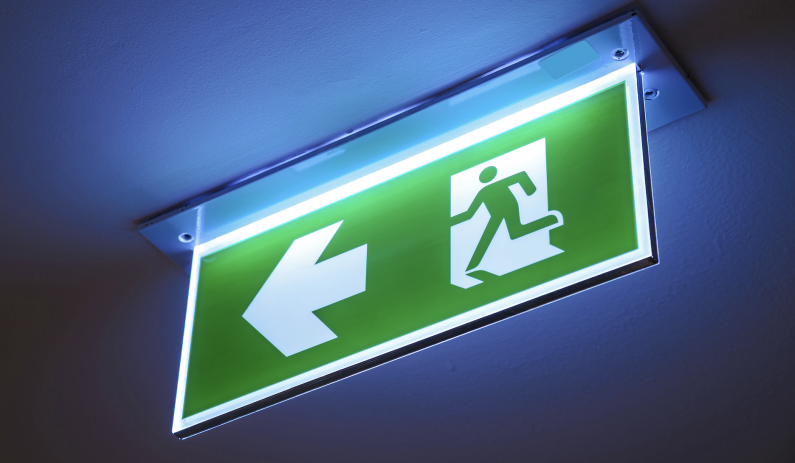
Emergency lighting does exactly what it says on the tin - it provides a back up source of light in the event that the main lighting source fails or becomes unavailable, usually during unforeseen circumstances. It is required for safety purposes and to allow activities to continue until the original source of light becomes available again. One of the main reasons for emergency lighting is so that any building occupants can find an escape route if required.
Emergency escape lighting: Part of the fire safety provision of a building and a requirement of The Regulatory Reform (Fire Safety) Order 2005, this provides illumination for the safety of people leaving a location. Escape route lighting must be sufficiently lit to enable swift and safe evacuation of a building by illuminating its escape routes, such as corridors and stairways [source: BSi guide to emergency lighting].
All commercial and industrial premises must have emergency lighting - this is standard in new builds. However, many older buildings don't have emergency lighting or - if they do - it is below the accepted standards. All emergency lighting must be installed in accordance with all current regulations, regularly inspected, tested and maintained. Even in new builds, emergency lighting needs to be reconfigured if the the building changes use or layout.
The BSI describes two types of emergency lighting - self contained and central battery system operated. Self contained has a light source and local battery charged by the mains. A central battery system is one where a building has a central battery bank that operates a loop of lighting. These can be maintained (available at all times) or non maintained (available only when the moonlight source is unavailable).
Standby lighting: Although not a legal requirement, standby lighting is often installed to enable normal activities to resume in the event of failure in the normal mains supply. However, it should be noted that as this type of emergency lighting is normally handled by generators or a UPS (Uninterruptible Power Supply), battery-based products are not suitable alone [source: BSi guide to emergency lighting].
The way in which emergency lighting might fail is commonly where systems haven't been maintained and tested and when the bulb life doesn't meet the required 3 hours and when it doesn't work across the range of low and high temperatures it may need to be effective in.
It is worth knowing that all lighting needs to be designed and installed in tandem with fire safety regulations so a thorough knowledge of lighting design must be married with technical understanding and involve the requisite skilled professionals to both specify and install it.
Talk to us if you have any concerns, it is what we're here for.
Useful link:
The BSI Guide to Emergency Lighting for Operators and Users
Useful information
British Standards
BS EN 60598-1 – Luminaires
BS EN 61347-1 - Lamp control gear
BS EN 61347-2-13 Lamp control gear
BS EN 61347-2-3 Lamp control gear
BS EN 62034 Automatic test systems for battery powered emergency escape lighting
